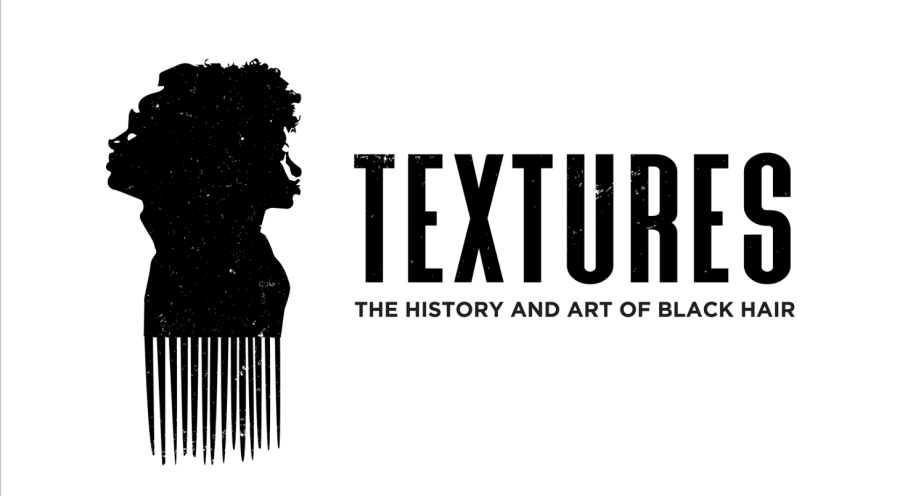“TEXTURES: the history and art of Black hair” symposium comes to a close
April 19, 2022
The Kent Museum finished its symposium of 22 presenters that focused on Black hair and its history in the United States on April 15.
The symposium lasted for two days with one key speaker each day.
The first key speaker, Afiya Mbilishaka, spoke about the history and culture of hair in Africa and how some cultures will shave both a mother’s and baby’s heads during a baby-naming ceremony.
Other cultures use hair as a status symbol, Mbilishaka said. Certain tribes such as the Masai, use their hair to show their positions as warriors.
“Part of their initiation into warriorhood is they have to grow locks,” Mbilishaka said whilst discussing a photo in her slide show, “We can tell that the person over here [speaking about a photo during the presentation] has been a warrior longer than the person to the right based on the length of their hair alone.”
She contrasted these spiritual and cultural practices by explaining how slavery ripped away Black people’s connection to their hair by slave masters shaving their heads and making them keep their hair short.
“Unfortunately, one of the first things European slave catchers and masters did was shave the hair of their new human cargo,” Mbilishaka said.
Crystal Porter followed after Mbilishaka and discussed the science of ethnic hair. She is the founder of Mane Insights Inc., which scientifically researches the specific needs of curly hair. During her presentation, she focused on natural Black hair compared to relaxed Black hair.
Relaxing the hair is done by putting chemicals into hair to make it straight, which causes damage, Porter explained.
When Porter’s own daughter was in middle school, she wanted her hair to be worn down and straight. Porter would not allow her daughter to have relaxers in her hair to keep them from permanently damaging it. Instead, she would allow her daughter to press it with hot combs or straighteners so that when wet, it could return to its natural curls.
She searched for a hairstylist for her daughter so that she could straighten her hair whilst keeping it healthy. Unfortunately, the stylist caused so much damage to her daughter’s hair, that it no longer curled back to its original curl pattern.
“[I was washing her hair] … as soon as the water hit her hair I was crushed because she had trained her hair, meaning that it no longer reverted back to its normal curl pattern,” Porter said. “I took some of her hair back to the laboratory and I tested it … even though she had not had any chemicals in her hair … her hair tested as though it was relaxed”
The symposium consisted of 20 other speakers who all discussed topics related to Black hair around the world, discussing the art, history and culture of Black hair.
Lynnette Gilbert, a professor of art at Arkansas Tech University, was one of the symposium’s speakers.
“It was an opportunity to explore and share my narrative on what I’ve learned through my journey through hair and how I exhibit that through my works of art,” Gilbert said. “Using different textures and different elements showcase my journey and my love for natural hair.”

The exhibit and symposium were a personal project for Tameka Ellington, associate professor of design who had been researching the history of Black hair for about 20 years and wanted a way to show off her findings in a unique way.
“My background is in fashion design, and I’ve always wanted a creative way to be able to talk about the research that I’ve been doing over time,” Ellington said. “Not everybody is going to go to an academic journal, not everybody’s going to go and read an encyclopedia journal. They’re not going to go through sources, but many people will come to a museum. And so, I started thinking about what an exhibition might look like.”
The symposium was brought together by Ellington and Joseph L. Underwood, assistant professor of art history. Both were also the co-curators of the TEXTURES exhibit. The pair spent over a year researching and gathering key speakers from across the United States.
“We put out a call to make it something truly interdisciplinary, not just scholars, but people who are hair artists, practitioners, designers, architects, chemists; and that’s who responded,” Underwood said.
The exhibit aims to teach and create an open space to process and discuss Black hair. It consists of artistic works such as paintings and photos and included items of history such as machines, appliances and chemicals that were used to straighten Black hair. The exhibit was opened in Sept. 2021 and runs through Aug. 14.
The symposium and its recorded live streams can be found on the museum’s website. The Kent State Museum is free to all students and $6 for the public.
Benjamin Weaver is a reporter. Contact him at [email protected]












